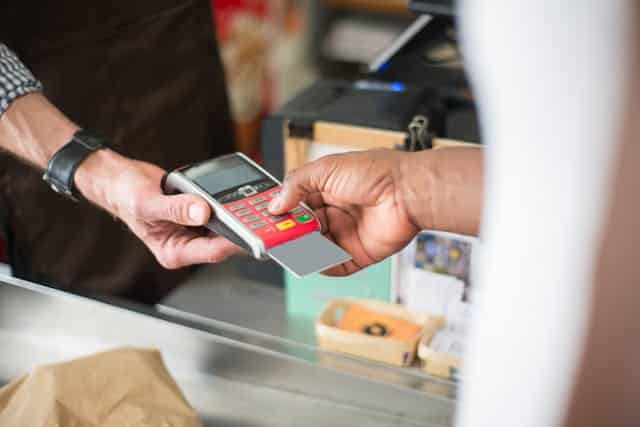Transitioning to the digital landscape is not an option but a necessity, particularly when it comes to managing payments. In our ever-evolving world, where cash is becoming increasingly obsolete, the way businesses handle transactions is pivotal not only for their success but also for the customer experience. As a business owner, Fintech professional, or e-commerce entrepreneur, upgrading your payment processes should be at the forefront of your strategy. With this guide, designed to be strategic and practical, we’ll explore six critical adjustments you can make to ensure your payment systems are not just ‘up-to-date’ but are optimally positioned to delight customers and drive profitability in the digital age.
1. Implement a Robust Payment Facilitation Model
A robust payment facilitation (PayFac) model simplifies payment processes, making it seamless for customers and efficient for businesses. By becoming a payfac or aligning with one, your business can enjoy several key benefits: Traditionally, the onboarding process for payment services has been cumbersome. A PayFac model simplifies this, enabling businesses to onboard new merchants, often within minutes. A PayFac model gives you control over the entire transaction, from the point of sale to payment processing, leading to a consistent and superior customer experience. Moreover, learning the essentials of payment facilitation can give you valuable insights into streamlining the payment process and optimizing revenue streams. Through this model, businesses can also gain access to innovative payment technologies, such as contactless payments, mobile wallets, and other digital payment methods that appeal to today’s customers.
2. Adopt Contactless and Mobile Payment Options
Consumers are increasingly looking for ways to pay that minimize physical touchpoints. Therefore, integrating contactless and mobile payment options into your existing infrastructure is no longer a luxury but a priority. Contactless payment methods, such as NFC-enabled credit cards and smartphones, offer speed and convenience. They also align with the health and safety preferences of many consumers. Mobile wallets, including Apple Pay, Google Wallet, and various others, allow for secure transactions without the need for physical credit or debit cards. They also facilitate one-click transactions, a convenience customers have come to expect. Adding contactless and mobile payment options ensures an enhanced checkout experience, which can lead to higher customer satisfaction and potentially increase conversion rates.
3. Secure Transactions with Updated Encryption and Cybersecurity Measures
Data breaches can have dire consequences, including financial loss, damaged reputation, and legal trouble. Therefore, incorporating robust encryption and cybersecurity measures into your payment processes is a continuous task. Tokenization substitutes sensitive payment information with unique identification symbols that are meaningless to potential hackers. This, combined with end-to-end encryption, significantly reduces the risk of data theft during transactions. Conducting regular security audits helps identify and rectify vulnerabilities proactively. Staying updated with the latest security standards and technologies is key to staying ahead of potential threats. Cybersecurity is not just a matter of technology; it involves people. Regular training can help employees recognize and respond appropriately to security threats.
4. Integrate Omnichannel Payment Solutions
By integrating payment solutions across multiple channels, you allow customers to start a transaction in one channel and complete it in another, without having to re-enter payment details. An omnichannel payment solution provides you with a central platform for reporting and managing all transactions, whether they originate from in-store sales or online purchases. Omnichannel payment solutions enable a more personalized approach, as they provide you with a 360-degree view of customer payment activity across all channels. This information can be leveraged to tailor offerings and experiences. Integrating omnichannel payments ensures that your business operates at the intersection of convenience and personalization, two attributes that customers value highly.
5. Utilize Data Analytics to Monitor Payment Trends and Customer Behavior
By analyzing transaction data, businesses can discern payment preferences among their customer base. This understanding is invaluable for tailoring your payment options to best serve your customers. Sophisticated analytics tools can detect abnormal payment behavior, signaling potential fraudulent transactions before they’re completed. Data analytics can also streamline your operations by optimizing payment processing times and reducing errors, ultimately saving both time and money. The adoption of data analytics ensures that your payment processes are not only secure and efficient but also adaptive to the evolving needs of your customers.
6. Stay Compliant with Regional and Global Financial Regulations and Standards
Keeping track of the ever-changing legal and regulatory environment can be challenging. Regular compliance checks, often supported by legal advisory services, are crucial to ensuring that your payment processes are up to date. Communication with your customers about their rights and the security of their data is paramount. Being transparent about the measures you’ve implemented helps build trust. Regulations can change, and businesses need to be agile in implementing those changes. This requires a flexible payment system architecture that can be adjusted as necessary. Ensuring compliance with financial regulations and standards is the foundation for a reliable and trustworthy payment process that protects both your customers and your business.
The digital era presents both challenges and significant opportunities for businesses willing to adapt. A strong, secure, and agile payment process is not just a back-office concern; it’s a frontline strategy that can define the success and longevity of your business. By following these six adjustments, you are well on your way to establishing a payment system that not only meets but exceeds the expectations of modern consumers. Remember, the key to navigating the complex world of digital transactions is to remain proactive, customer-centric, and informed.







